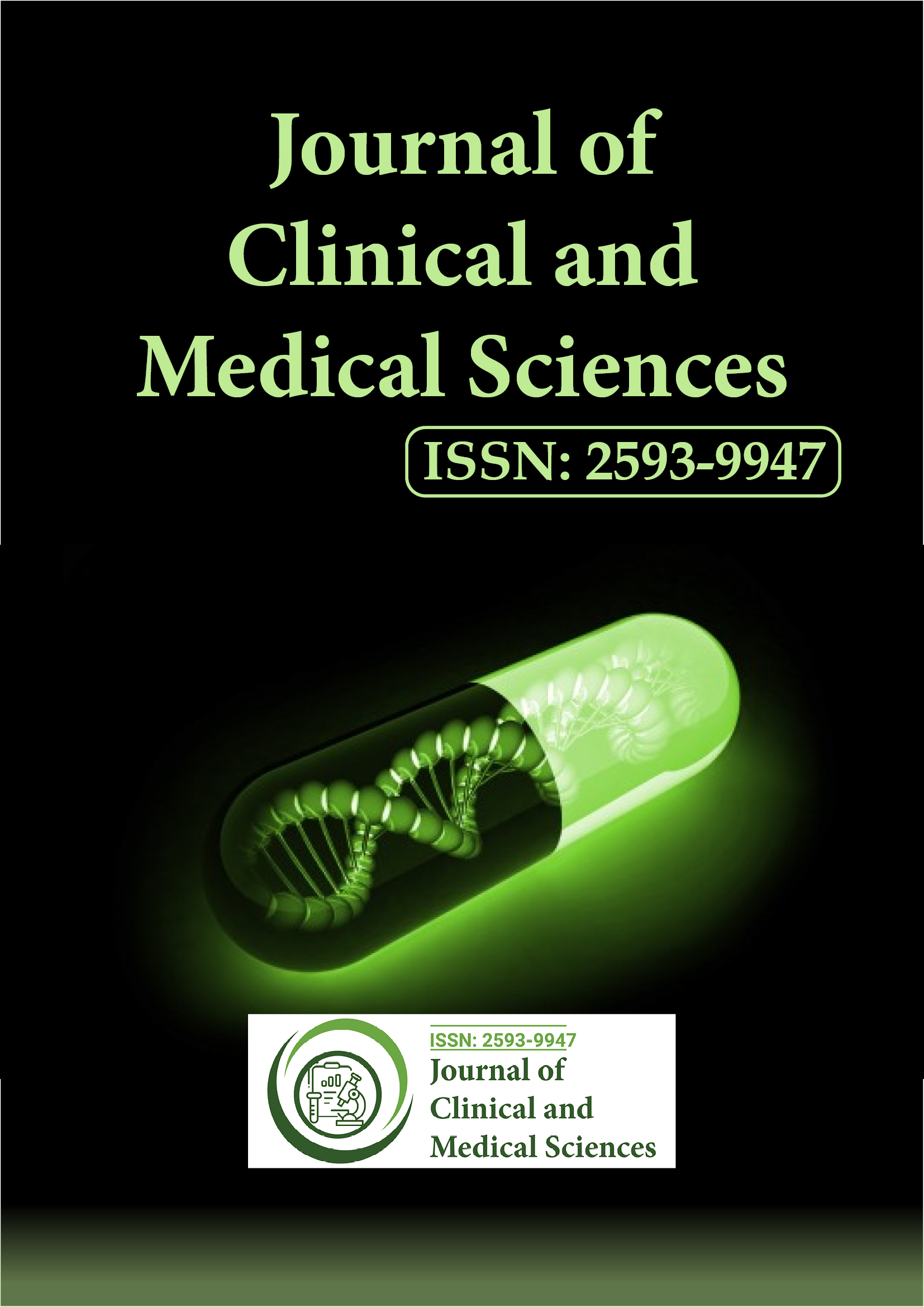Indexed In
- Euro Pub
- Google Scholar
Useful Links
Share This Page
Journal Flyer

Open Access Journals
- Agri and Aquaculture
- Biochemistry
- Bioinformatics & Systems Biology
- Business & Management
- Chemistry
- Clinical Sciences
- Engineering
- Food & Nutrition
- General Science
- Genetics & Molecular Biology
- Immunology & Microbiology
- Medical Sciences
- Neuroscience & Psychology
- Nursing & Health Care
- Pharmaceutical Sciences
Perspective - (2024) Volume 8, Issue 3
The Role of Medical Technologies in Enhancing Clinical Outcomes and Healthcare Efficiency
Emiran Riyaz*Received: 27-Aug-2024, Manuscript No. JCMS-24-27489; Editor assigned: 30-Aug-2024, Pre QC No. JCMS-24-27489 (PQ); Reviewed: 13-Sep-2024, QC No. JCMS-24-27489; Revised: 20-Sep-2024, Manuscript No. JCMS-24-27489 (R); Published: 27-Sep-2024, DOI: 10.35248/2593-9947.24.8.290
Description
Medical technologies have become a base modern healthcare, significantly enhancing clinical outcomes and improving the efficiency of healthcare systems worldwide. These technologies range from advanced diagnostic tools and imaging equipment to minimally invasive surgical techniques, digital health platforms and Artificial Intelligence (AI) applications. Their integration into healthcare practices has revolutionized the way physicians diagnose, treat and manage various health conditions, ultimately leading to better patient outcomes, streamlined processes and more cost-effective care.
One of the most notable ways in which medical technologies have transformed healthcare is through the improvement of diagnostic accuracy. Imaging technologies such as Magnetic Resonance Imaging (MRI), Computed Tomography (CT) and ultrasound have made it possible to visualize the internal structures of the body in unprecedented detail. These tools allow for early detection of conditions such as tumors, cardiovascular disease and neurological disorders, often before symptoms appear. Early diagnosis is crucial as it provides healthcare providers with a greater range of treatment options, potentially saving lives and reducing the need for more invasive, expensive procedures later on. In addition, the use of genetic testing and molecular diagnostics has enabled personalized medicine, where treatments can be tailored based on an individual's genetic makeup, ensuring higher efficacy and minimizing adverse effects.
Surgical procedures have also seen remarkable advancements thanks to medical technologies. Minimally invasive surgeries, facilitated by robotic systems and endoscopic techniques, have reduced the need for large incisions, leading to shorter recovery times, less postoperative pain and fewer complications. The use of robotic-assisted surgery, such as that offered by systems like the da Vinci Surgical System, allows surgeons to perform complex procedures with greater precision and control. This results in more successful outcomes, as well as quicker recovery times for patients, reducing the burden on healthcare facilities and improving overall efficiency.
In addition to advancements in diagnostics and surgery, medical technologies have enhanced patient care through the use of Electronic Health Records (EHRs) and telemedicine. EHRs have replaced paper-based records, providing healthcare providers with instant access to a patient's medical history, lab results and medication lists. This digital system reduces the risk of errors, improves communication among healthcare teams and facilitates more informed decision-making. Furthermore, the ability to track patient data in real time allows for better management of chronic conditions, as doctors can monitor patients remotely and make timely adjustments to treatment plans. This continuous care model helps to prevent complications and hospital readmissions, improving long-term health outcomes.
Telemedicine, which has grown in popularity, particularly during the COVID-19 pandemic, is another technology that has significantly enhanced healthcare efficiency. By enabling remote consultations, telemedicine breaks down geographical barriers, allowing patients in rural or underserved areas to access high-quality healthcare services. It also reduces the strain on healthcare facilities by managing non-urgent cases remotely, reserving in-person visits for more serious conditions. Telemedicine platforms also facilitate the timely exchange of information between specialists and primary care providers, speeding up diagnoses and improving treatment plans.
Artificial Intelligence (AI) and machine learning are increasingly playing a pivotal role in the healthcare sector. These technologies are being used to analyze large volumes of medical data, helping to identify patterns and predict health trends with high accuracy. For example, AI algorithms are being used to analyze medical images, detecting abnormalities such as cancers, fractures, or heart conditions that might be overlooked by human eyes. In addition, AI-powered chatbots and virtual assistants are being deployed to provide patients with instant access to health advice, appointment scheduling and medication reminders, improving patient engagement and compliance.
Another area where medical technologies are enhancing efficiency is in the management of healthcare logistics. Supply chain management tools and automated inventory systems help hospitals and clinics keep track of medical supplies, ensuring that essential items are always available without overstocking. This streamlines operations, reduces waste and cuts costs. Similarly, hospital management systems that track patient flow, bed occupancy and resource utilization help optimize staffing and space allocation, reducing bottlenecks and wait times for patients.
In conclusion, medical technologies have had a profound impact on both clinical outcomes and healthcare efficiency. They have not only improved diagnostic accuracy and treatment precision but have also transformed the way healthcare is delivered, making it more accessible and efficient. As technology continues to evolve, the potential for even greater improvements in patient care and healthcare system optimization is vast, promising a future where medical technologies further enhance quality of life and outcomes for patients around the globe.
Citation: Riyaz E (2024). The Role of Medical Technologies in Enhancing Clinical Outcomes and Healthcare Efficiency. J Clin Med Sci. 8:290.
Copyright: © 2024 Riyaz E. This is an open access article distributed under the terms of the Creative Commons Attribution License, which permits unrestricted use, distribution, and reproduction in any medium, provided the original author and source are credited.
